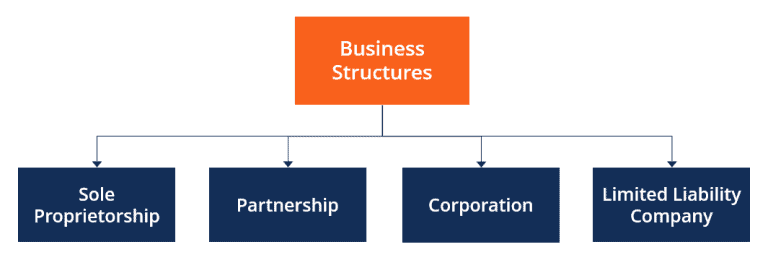Do you know how to localize your ecommerce shop to target new audiences in different regions?
Localization is a crucial strategy for business owners to sell products and services in multiple regions successfully. It helps you to break national barriers and cater to customers with different cultures in a specific area.
Are you a new entrepreneur seeking to learn ways to localize your ecommerce shop? Join us as we discuss everything beginners should know about the topic, including the strategies to adopt for success. Let’s get started.
Ecommerce Localization: What Is It?
Ecommerce localization refers to transforming an online store into a new culture or language to cater to customers in a specific region. It involves refining your website’s content, pricing, and products for regional markets.
While translation is crucial to your localization success, consider customizing the entire customer experience. It requires you to view your online company formation from a different perspective culturally, putting yourself in the shoes of others speaking a foreign language.
Localization allows business owners to offer accurate product descriptions in the customer’s native language, leaving no room for misunderstanding. Lastly, it ensures the perfect multilingual features and cross-cultural translation in e-commerce.
Why Localize Your Ecommerce Shop?
The first reason your ecommerce company formation online should adopt localization is the understanding barrier when engaging customers. They don’t have to mess with machine-translated text or struggle with unfamiliar formats when relating to your products.
It’s undoubtedly clear that customers prefer familiarity to the unknown. Research also shows that clients prefer visiting websites in their native language and buying products in their currency.
Localization is crucial for global expansion and encourages trust while giving customers more confidence in your brand. Furthermore, it helps you tap into the international market, allowing you to grow without national barriers.
How to Localize Your Ecommerce Shop
After deciding to expand into a new market, it’s time to think about localization. Below are the best ways to localize your ecommerce shop:
1. Conduct In-depth Research
Your first step to localization is researching each target market thoroughly before adapting content strategies. You might also need a proper understanding of your prospective audience to achieve success.
Register your business online and start with the basics and learn what dialect or language the people speak and their local currency. Consider getting a clearer picture of them culturally and how they generally relate to specific products and ecommerce. Also, consider their religion, historical background, and politics.
Another excellent option is hiring a localization expert living in the region or consulting with someone who is part of their culture.
2. Translate Your Content
After researching your target audience, translating your website content into their dialect is a success. Consider the language’s linguistic differences when moving into an English-speaking market. For example, the spelling and vocabulary of people living in the US and UK are different.
Consider hiring experts when translating to an entirely different dialect or language and it’ll improve your brand reputation. While you might get away with minimal mistakes using machine translation tools like Google Translate, a professional will deliver an excellent result.
3. Create Localized Versions of Your Site
Online registration companies targeting multiple markets should create a different version of their URL to reach customers in other regions. While it depends on your website structure, you can achieve this with subdomains, subfolders, and country-code top-level domains.
After establishing your localized URLs, adopt strategies directing customers to them. You can automatically redirect customers based on their geolocation or IP addresses on most ecommerce platforms.
Lastly, it’s also best to allow clients to choose which regional site to visit through dropdown menus or automatic prompts.
4. Personalize Currency and Pricing
Showing prices in each market’s local currency is essential if you want to localize your ecommerce shop. Otherwise, clients have to undergo the agony of conversion, which often leads to abandoned shopping carts.
After localizing the currency for your audience, consider adjusting the prices. Remember that the same products and services have different prices worldwide, so account for the changes in your pricing strategy.
Consider building the taxes, shipping, and customs costs into your prices for international customers instead of adding them at checkout.
5. Accept Various Payment Methods
Although cross-border payments are becoming increasingly popular globally, people still choose to pay for goods and services differently. Most customers prefer using credit cards, while others adopt digital wallets such as Google Pay and Apple Pay.
After setting up a company online, business owners don’t want to lose customers because they don’t accept their payment method. Avoid this by offering as many options as possible. Buyers are less likely to abandon cards on websites with their preferred choices at the last minute.
6. Offer Customized Support
Most buyers become recurring customers when they enjoy a seamless experience relating to your products. They can encounter problems, especially when navigating a new market. Therefore, offering customized support, such as providing answers in their native language, is crucial.
Another excellent idea is to offer localized versions of your informational pages, live chat, and FAQs. It’s also a great idea to anticipate questions and provide tailored answers. It lets customers know you’re thinking about them and improves your marketing ROI.
Localize Your Ecommerce Shop with Ease
After learning how to localize your ecommerce shop easily, consider adapting the images on your website. Ensure your brand’s visual identity is consistent across regional sites. Tweaking the logo or color might make the site looks illegitimate.
Showcase your products and service uniquely appealing to the local customers’ interests. Consider the regional styles and trends when selecting product images, and test different options before choosing the best.
After adopting the images and content on your website, it’s time to localize your ecommerce marketing strategies. Before implementing your ideas, you want to understand how marketing works in specific regions.








